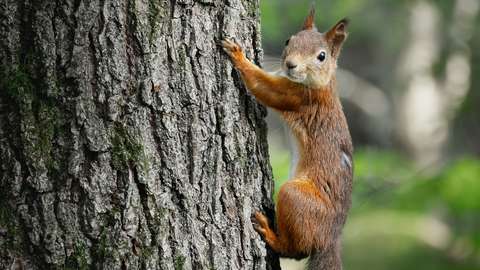The many benefits of trees

No matter the species, every tree is valuable. Trees provide many benefits to both animals and people, which is why the Espoo Environment and Building Control Department encourages people to treasure their garden trees.
“A tree growing in the garden can be 60 years old or older. If it is felled, it will take decades before a sapling grows into a tree that matches the one that was felled,” says Anna Hakala, Environmental Specialist at the City of Espoo.
For biodiversity, trees are essential; they provide food and shelter for birds, habitats for insects and microbes, a nesting place for squirrels and, sometimes, for bats as well.
Trees also benefit people in many ways.
“The leaves and needles of trees evaporate water, which affects the microclimate and makes it pleasant to be near trees, especially during heatwaves. When the sun is shining, trees provide shade to gardens and houses, reducing the need to cool homes,” Hakala says.
Full-grown garden trees absorb rainwater and snow meltwater at their roots. Trees help to manage stormwater in a natural way, and the property owner does not necessarily have to divert water to drains or build subsurface drains. The roots of the trees, on the other hand, protect the garden from erosion caused by flooding and heavy rain.
Hakala wants to correct some of the justifications for felling trees.
“Felling a birch tree in the garden will not affect your pollen allergy, and the shadows of trees do not necessarily interfere with the electricity production of solar panels. You don’t have to rake the leaves in autumn — you can shred them with a lawnmower and leave them on the ground as fertiliser for the lawn.”
Did you know that...?
- A birch can absorb about 500 litres of water per day.
- A pine does not spread its roots widely. Thanks to its taproot, it is more resilient against storms than many other trees.
- The willow tree is an important source of food for pollinators in spring and, as it is shrub-like, provides protection for birds.
Text: Minna Saano.
This article has originally been published in the Espoo Magazine 2/2024. Read other articles in the Espoo Magazine.